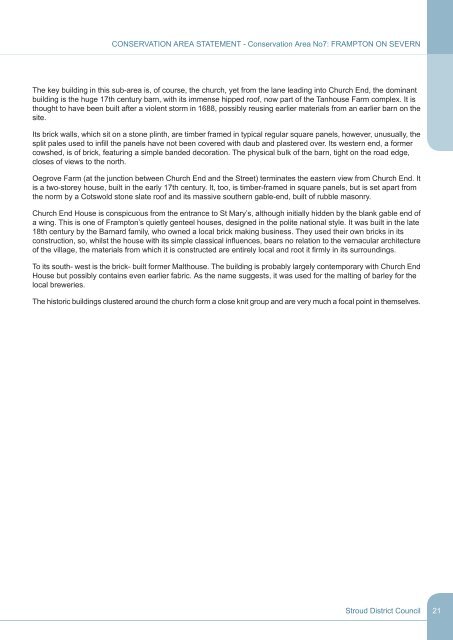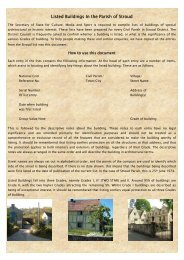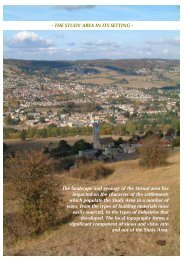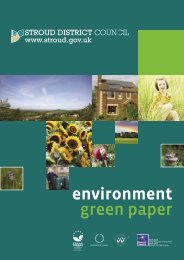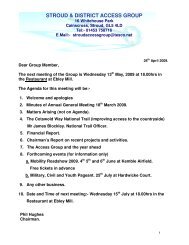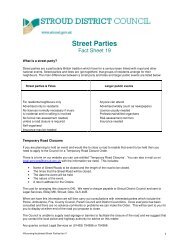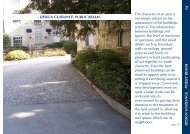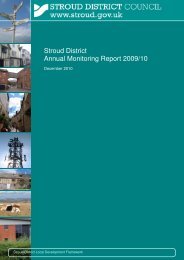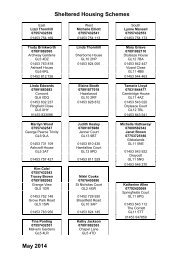CONSERVATION AREA STATEMENT - Stroud District Council
CONSERVATION AREA STATEMENT - Stroud District Council
CONSERVATION AREA STATEMENT - Stroud District Council
Create successful ePaper yourself
Turn your PDF publications into a flip-book with our unique Google optimized e-Paper software.
<strong>CONSERVATION</strong> <strong>AREA</strong> <strong>STATEMENT</strong> - Conservation Area No7: FRAMPTON ON SEVERN<br />
The key building in this sub-area is, of course, the church, yet from the lane leading into Church End, the dominant<br />
building is the huge 17th century barn, with its immense hipped roof, now part of the Tanhouse Farm complex. It is<br />
thought to have been built after a violent storm in 1688, possibly reusing earlier materials from an earlier barn on the<br />
site.<br />
Its brick walls, which sit on a stone plinth, are timber framed in typical regular square panels, however, unusually, the<br />
split pales used to infill the panels have not been covered with daub and plastered over. Its western end, a former<br />
cowshed, is of brick, featuring a simple banded decoration. The physical bulk of the barn, tight on the road edge,<br />
closes of views to the north.<br />
Oegrove Farm (at the junction between Church End and the Street) terminates the eastern view from Church End. It<br />
is a two-storey house, built in the early 17th century. It, too, is timber-framed in square panels, but is set apart from<br />
the norm by a Cotswold stone slate roof and its massive southern gable-end, built of rubble masonry.<br />
Church End House is conspicuous from the entrance to St Mary’s, although initially hidden by the blank gable end of<br />
a wing. This is one of Frampton’s quietly genteel houses, designed in the polite national style. It was built in the late<br />
18th century by the Barnard family, who owned a local brick making business. They used their own bricks in its<br />
construction, so, whilst the house with its simple classical influences, bears no relation to the vernacular architecture<br />
of the village, the materials from which it is constructed are entirely local and root it firmly in its surroundings.<br />
To its south- west is the brick- built former Malthouse. The building is probably largely contemporary with Church End<br />
House but possibly contains even earlier fabric. As the name suggests, it was used for the malting of barley for the<br />
local breweries.<br />
The historic buildings clustered around the church form a close knit group and are very much a focal point in themselves.<br />
<strong>Stroud</strong> <strong>District</strong> <strong>Council</strong><br />
21


